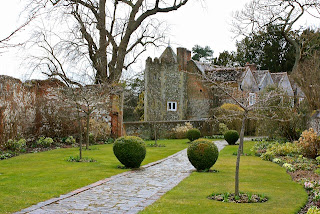Greys Court is a Tudor country house and associated gardens, at the southern end of the Chiltern Hills at Rotherfield Greys, near Henley-on-Thames in the English county of Oxfordshire. It is owned by the National Trust and is open to the public. The estate dates from the 14th century.
The mainly Tudor style house has a beautiful courtyard and gardens. The walled gardens are full of old-fashioned roses and wisteria, an ornamental vegetable garden, a maze (laid to grass with brick paths, dedicated by Archbishop Robert Runcie on 12 October 1981) and ice house.
The house itself has an interesting history, and the interior, with some outstanding 18th-century plasterwork, is still furnished as a family home. Greys Court was for a time owned by Sir Francis Knollys, treasurer to Elizabeth I, and jailer ofMary, Queen of Scots.
In 1937 the house was bought by Sir Felix Brunner (1897–1982) and his wife Lady Elizabeth Brunner, the grand-daughter of the Victorian actor-manager Henry Irving . In 1969 they donated the property to the National Trust, with the family continuing to live in the house until the death of Lady Brunner in 2003.
The house has been continuously occupied, with additions and alterations, over a 600-year period.
It appeared as "Downton Place," a secondary property of the Earl of Grantham, in a 2012 episode of Downton Abbey.
http://en.wikipedia.org/wiki/Greys_Court
The remains of foundations of earlier walls and gate-houses have been seen during a drought, when the lawns dried out in a hot summer.













No comments:
Post a Comment